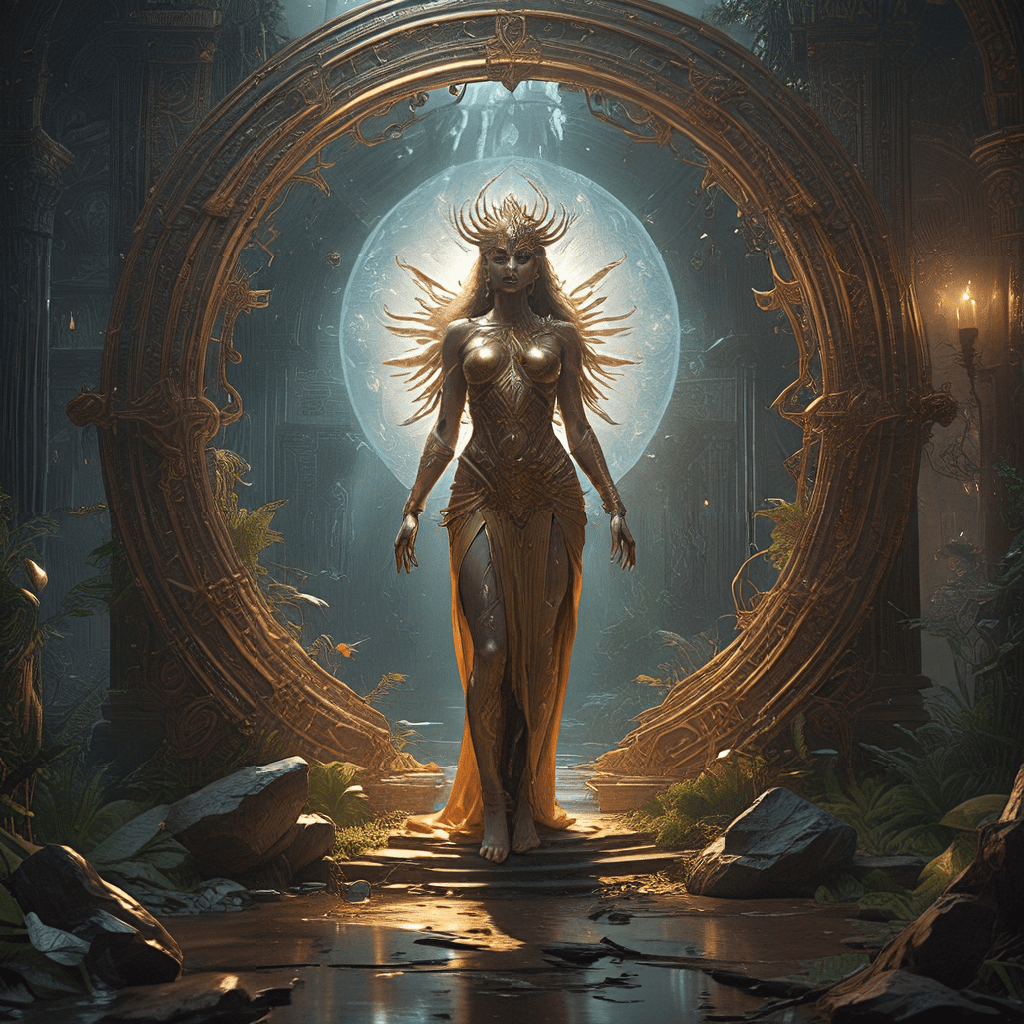1. Introduction: A World Beyond the Horizon
Ancient Egyptians held a unique and profound belief in the afterlife, a realm that transcended the physical world and promised a continuation of existence. They believed that death was not an end but a transition, a journey into a mystical realm known as the Duat, or the underworld. Central to this belief was the concept of the “ka,” the spiritual essence of a person that lived on after death. The “ba” was another important element, representing the personality and individuality, and the “akh,” which was the transformed spirit that could join the gods in the afterlife. The afterlife played a vital role in Egyptian society, influencing their daily lives, their artistic expressions, and their elaborate funerary rituals.
2. The Journey Begins: Death and the Underworld
The Egyptians believed that death was a gradual process, commencing with the moment of physical demise and culminating with a series of trials and tribulations in the underworld. The deceased’s body was carefully prepared for the afterlife through mummification, a complex ritual designed to preserve the physical form, ensuring its journey to the next world. The process of mummification involved removing the internal organs, drying the body with salts, and wrapping it in linen bandages. A crucial aspect of the funeral rituals was the “Weighing of the Heart” ceremony, presided over by the god Anubis, the jackal-headed deity of the dead. Anubis would weigh the deceased’s heart against the feather of Ma’at, the goddess of truth and justice. If the heart was lighter than the feather, the deceased was deemed worthy of entering the afterlife. Otherwise, they would be devoured by Ammit, a monster representing the embodiment of evil.
3. Trials and Tribulations: Facing the Underworld’s Challenges
The journey through the Duat was fraught with challenges and dangers. The deceased had to navigate a perilous landscape, encountering fearsome guardians and formidable monsters, each representing a different aspect of the soul’s purification. The “Book of the Dead,” a collection of spells and prayers, served as a guide for the deceased, offering instructions on how to overcome these obstacles. The deceased had to recite the correct spells, answer riddles, and prove their worthiness to reach the afterlife. The final judgment was delivered by Osiris, the god of the underworld, who would determine the deceased’s fate based on their conduct in life.
4. The Fields of Reeds: A Promise of Eternal Bliss
Those who successfully navigated the trials of the underworld were granted access to the “Fields of Reeds,” a paradise located in the afterlife, governed by Osiris. This idyllic realm was characterized by lush vegetation, fertile land, and an abundance of food and drink. The deceased would live eternally in this paradise, enjoying a blissful existence free from the pain and suffering of the mortal realm. The concept of “eternal life” was central to the Egyptian belief in the afterlife, a continuation of existence that transcended the limitations of the physical world. This promise of eternal life motivated individuals to live virtuous lives, adhering to the principles of Ma’at, hoping to gain passage to this blissful realm.
5. The Role of the Gods: Guiding the Deceased
The Egyptian pantheon played a significant role in the afterlife, guiding and assisting the deceased on their journey. Isis, the goddess of motherhood and magic, was believed to possess the power to revive the dead, while Nephthys, her sister, guarded the deceased and offered them protection. The sun god Ra, who sailed across the celestial sky in his solar bark, was believed to guide the deceased through the Duat, ensuring their safe passage to the afterlife. The deities exerted their influence throughout the afterlife, shaping the deceased’s experiences and ultimately determining their eternal fate.
6. Ancient Egyptian Funerary Practices: Preparing for the Afterlife
The Egyptians believed that the physical body was a vessel for the “ka” and that it had to be preserved for the afterlife. This belief led to the development of elaborate funerary practices designed to prepare the deceased for their journey to the next world. The most prominent practice was mummification, a complex process that involved preserving the body through dehydration and wrapping it in linen bandages. Tombs, often constructed with great care and artistry, served as the final resting place for the deceased and were filled with funerary offerings such as food, drink, jewelry, and other objects that would be needed in the afterlife. Amulets and magical spells were also included in the tombs, believed to offer protection and guidance to the deceased on their journey. The aim of these funerary practices was to ensure a successful transition to the afterlife and a comfortable existence in the next world.
7. The Cycle of Rebirth and Renewal: A Constant Journey
The ancient Egyptians believed in a cyclical nature of life, death and rebirth. This belief was expressed in their concept of reincarnation, the idea that the “ka,” or spiritual essence, could reincarnate into a new body. Though the Egyptians did not believe in the same type of reincarnation as some other cultures, they did believe that the “ka” could be reborn, perhaps into a different form. This cyclical nature of life and death reinforced the importance of living a virtuous life, as each lifetime provided an opportunity to learn, grow, and prepare for a more fulfilling existence in the afterlife. The concept of “ka” was central to this belief, representing the enduring essence of a person that transcended the limitations of mortality and continued its journey through the cycles of life and death.




